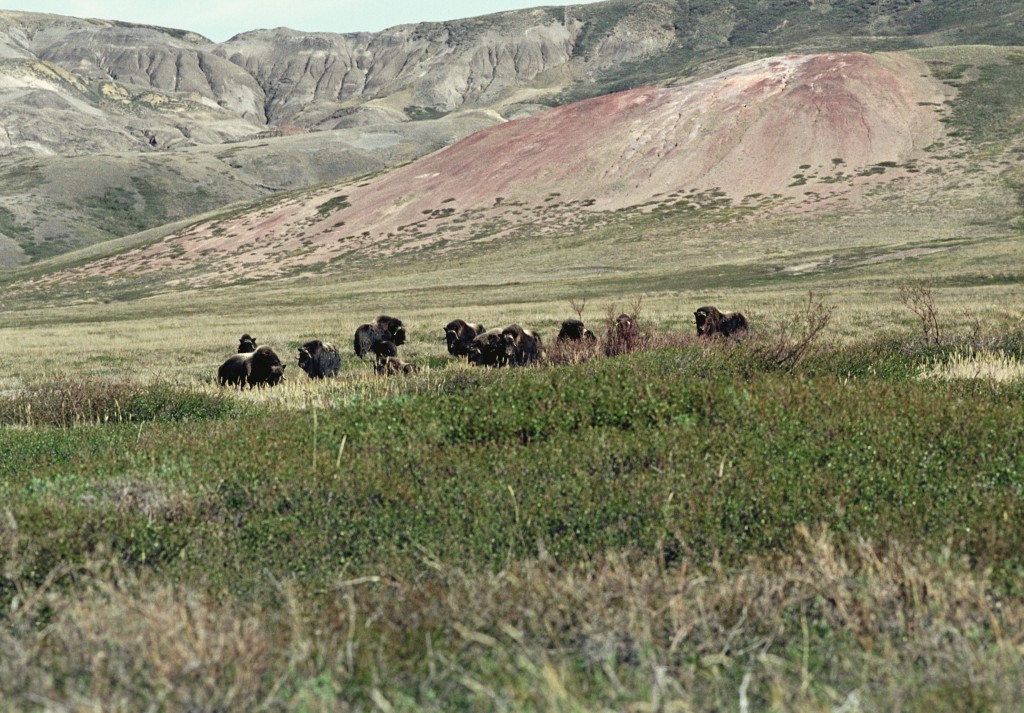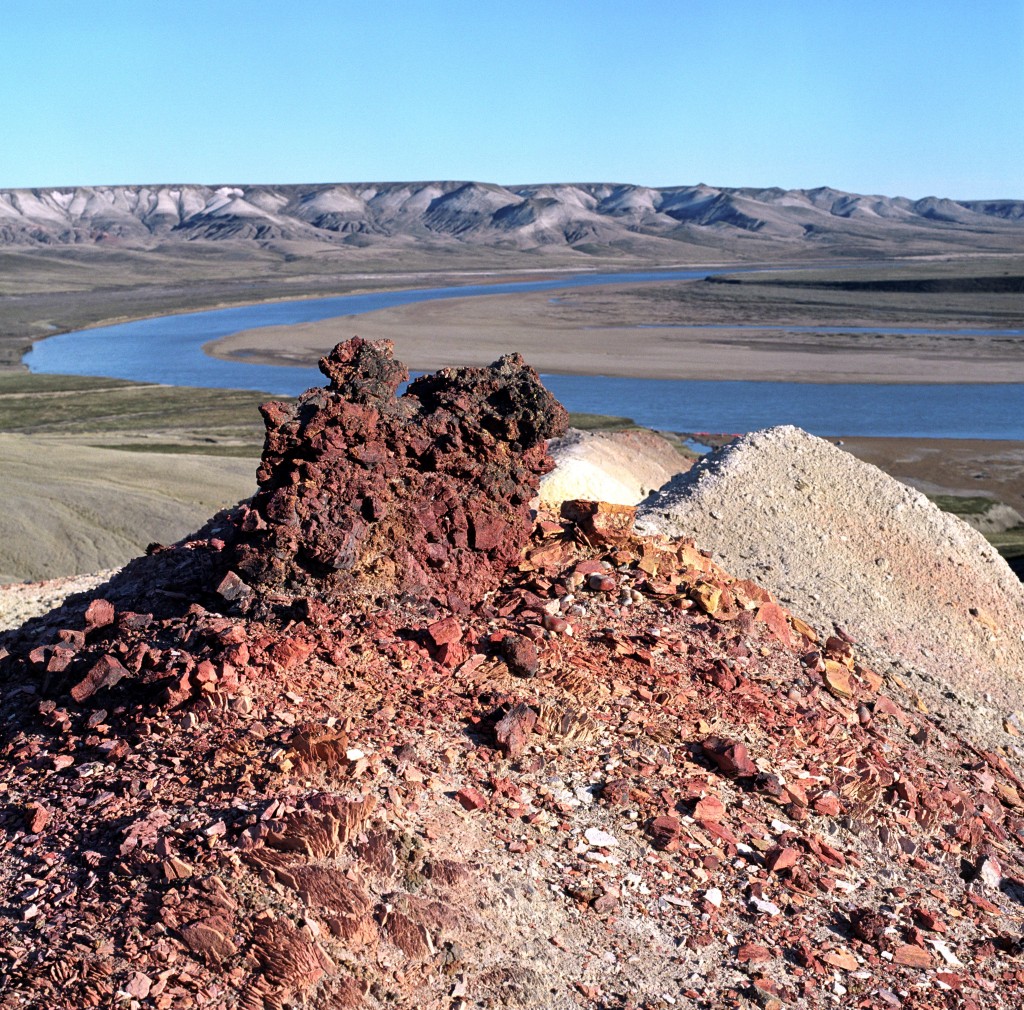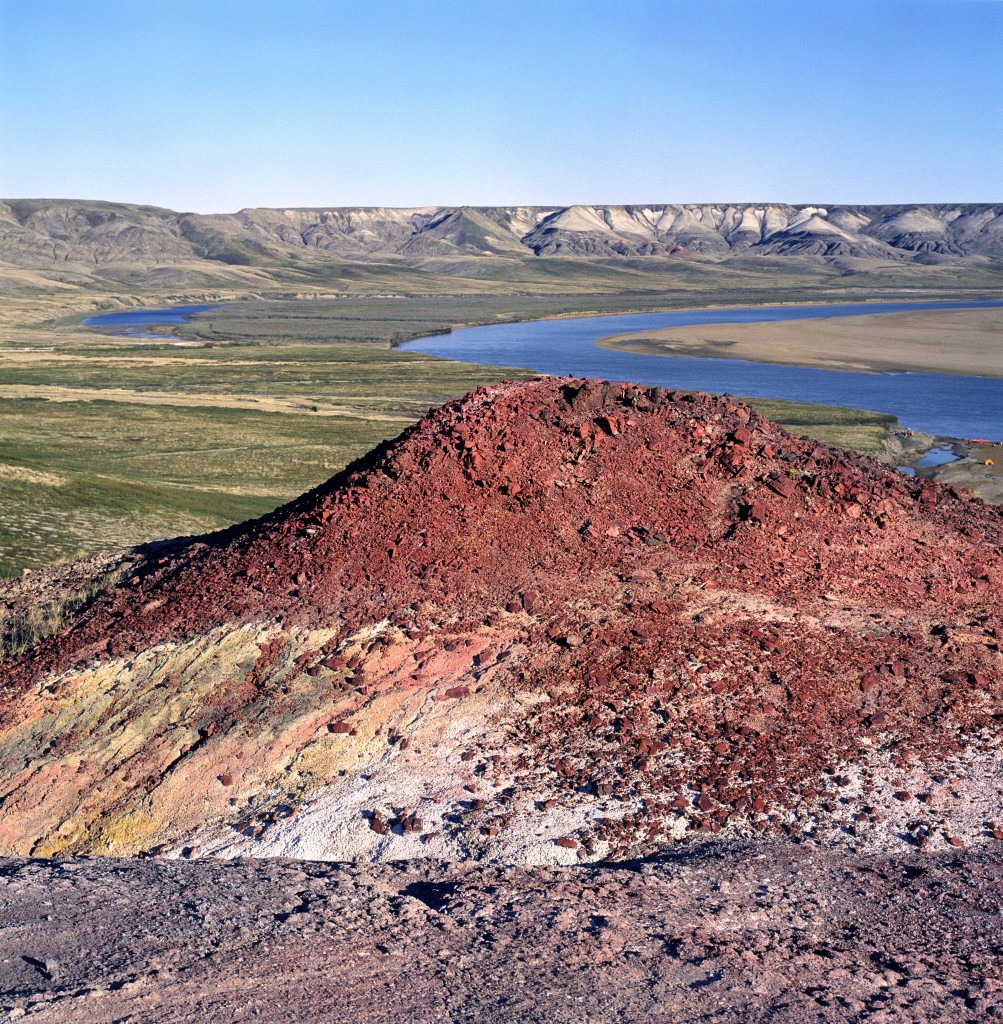In 1850, British Captain Robert McClure and his crew ventured in the Investigator to the Arctic, with a walrus-shaped figurehead leading the way in search of the lost Franklin expedition. Unlike ill-fated Franklin, McClure employed an Inuit translator and was able to engage meaningfully with coastal communities along the Arctic Ocean. The team found and completed the Northwest Passage – their abandoned ship, with its bounty of metal salvage, would later represent a turning point in the material culture of the Coppermine Inuit – but not before observing a curious phenomenon, which McClure related in his dispatches:
The water was deep, eighty-four fathoms being obtained, only four miles off shore, when near the mouth of the Horton River. On the 4th large fires were seen on shore, and at first supposed to be lighted by the natives to attract attention. Mr. Mierching, however, questioned such extravagance in fuel being committed by Esquimaux, and on the next day (Sept. 5), when it happened to be calm with rain, Lieutenant Gurney Cresswell, Doctor Armstrong, and some others, were sent to examine the spot…The fires proved to be volcanic, and issued in smoke strongly impregnated with sulphur, from fifteen different cone-like apertures resembling lime-kilns, whence Dr. Armstrong collected a considerable quantity of specimens of earths and minerals, in which the locality was rich.
 The Smoking Hills have been burning for centuries, and their most striking feature, for paddlers on the Horton River in Canada’s Northwest Territories, are the rainbow sherbet-coloured, fire-baked mudstones they create. Herds of muskoxen add to the magic. Those specimens of smoking rock, carried back to the ship, reportedly burned a hole in McClure’s mahogany desk.
The Smoking Hills have been burning for centuries, and their most striking feature, for paddlers on the Horton River in Canada’s Northwest Territories, are the rainbow sherbet-coloured, fire-baked mudstones they create. Herds of muskoxen add to the magic. Those specimens of smoking rock, carried back to the ship, reportedly burned a hole in McClure’s mahogany desk.
The heat was not, as the explorers assumed, volcanic, but rather produced by an exothermic reaction between iron pyrite, sufur and bituminous shale. The fumes they give off contain sulphur dioxide, sulphuric acid and steam, all of which acidifies the surrounding pools and makes for a pocket of distinctive biota, in contrast to the alkaline waters in the limestone-dominated area.
 Above images taken probably by David Sinclair (my father), possibly by me. Here are someone else’s shots of them really getting their smoke on.
Above images taken probably by David Sinclair (my father), possibly by me. Here are someone else’s shots of them really getting their smoke on.
